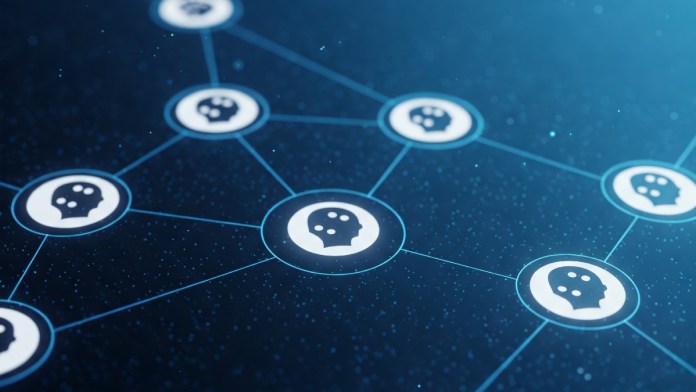Google has taken a big stride to set the communication standard of the evolving agentic AI landscape with its new Agent2Agent (A2A) framework. The goal of A2A is to enable AI agents to communicate and collaborate across different systems and applications. Here’s how A2A works and its significance for the future of AI collaboration.
What is A2A?
The Google Agent2Agent (A2A) framework provides an open standard for communication between independent AI agents. Think of it as a protocol that allows agents built by different vendors, using different technologies, to talk to each other, the same way that the world wide web is created of a patchwork of services that can interact with each other regardless of the underlying technology.
The core purpose of A2A is to break down the silos that currently separate AI agents within an enterprise. For example, suppose a company has created AI agents on top of different LLMs and different platforms. In that case, these agents should be able to cooperate to accomplish tasks without the need to modify them.
This collaboration aims to significantly increase agent autonomy, boost productivity gains, and lower operational costs for businesses relying on AI automation. Google has launched A2A with support from over 50 partners, including major tech vendors and service providers.
How does A2A work?
A2A defines a structured way for a “client” agent (one requesting help) to interact with a “remote” agent (one performing a task). This interaction relies on several key components:
Agent Discovery (Agent Card): For agents to collaborate, they first need to find each other and understand capabilities. A2A uses an “Agent Card,” a standardized JSON file that each remote agent publishes. This card details the agent’s name, description, skills, supported communication modes (like text, audio, or video), and authentication requirements. Client agents use these cards to identify suitable remote agents for specific tasks. A2A agents can discover each other via a known URL (/.well-known/agent.json) or through curated enterprise agent registries.
Tasks: The fundamental unit of work in A2A is the “Task.” When a client agent needs something done, it initiates a Task and sends it to the chosen remote agent. The A2A protocol defines the structure of this task object and tracks its lifecycle. This allows both agents to stay synchronized, whether the task is completed quickly or requires hours or days (especially if human input is needed). The output or result of a completed task is called an “Artifact.”
Communication (messages and artifacts): Agents exchange information through structured “Messages.” These messages can contain context, instructions, replies, or the final artifact.
Updates for long-running tasks: For tasks that aren’t instantaneous, A2A supports mechanisms for the remote agent to keep the client informed. Remote agents can push status updates via Server-Sent Events (SSE) if a persistent connection is available, or potentially through external notification systems.
Consider a user asking their primary research agent (the client) to compile a report on recent market trends for a specific industry and their relevance to the company.
The client agent interprets the request and identifies the need for search the web, analyze internal data, and write a draft report. Using A2A discovery (Agent Cards), it finds specialized remote agents: one skilled in web crawling, another in statistical analysis, and a third in document structuring.
The client agent initiates distinct A2A “Tasks” for each remote agent: Task 1 (gather relevant articles/data) goes to the web search agent, Task 2 (analyze internal dataset) goes to the analysis agent.
Each remote agent executes its assigned task. The search agent returns web links and extracted text as an “Artifact.” The analysis agent returns charts and key findings as its Artifact. These are sent back to the client agent via A2A “Messages.”
The client agent might then initiate Task 3, sending the collected artifacts to the report structuring agent to draft sections. This agent returns a formatted document section as its Artifact. Throughout the process, as the agent gathers new information, it might get back to the user with reports on its progress and to pose clarifying questions and correct course. If the research process is lengthy, the remote agents could provide status updates via A2A throughout their task execution.
Finally, the primary client agent assembles the artifacts received from all remote agents into a cohesive final report for the user. The user might then decide that they want to create an interactive website that makes it easier to navigate the content and the data charts in the report. For this, the user calls on another remote agent that has web development capabilities and instructs it to create a website for the report and to host it on the company’s internal server.
Each of these agents might be running on different platforms. For example, the main agent might be running on Google Cloud using Gemini 2.5 Pro. The data analysis agent might be powered by an open-weight model and running on the company’s own servers where it can access proprietary data. The report and web developer agents might be using Claude 3.7 Sonnet and be running on Amazon Bedrock.
Thanks to a protocol like A2A, these different agents can transparently work together across different providers.
How to develop your A2A strategy
As the AI agent landscape evolves, there is quite a bit of confusion around the definitions and boundaries of different protocols and frameworks.
Subscribe to continue reading
Become a paid subscriber to get access to the rest of this post and other exclusive content.

